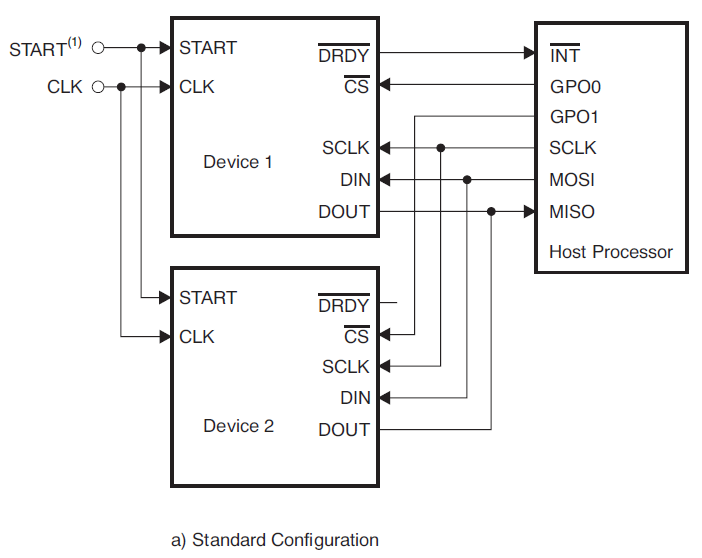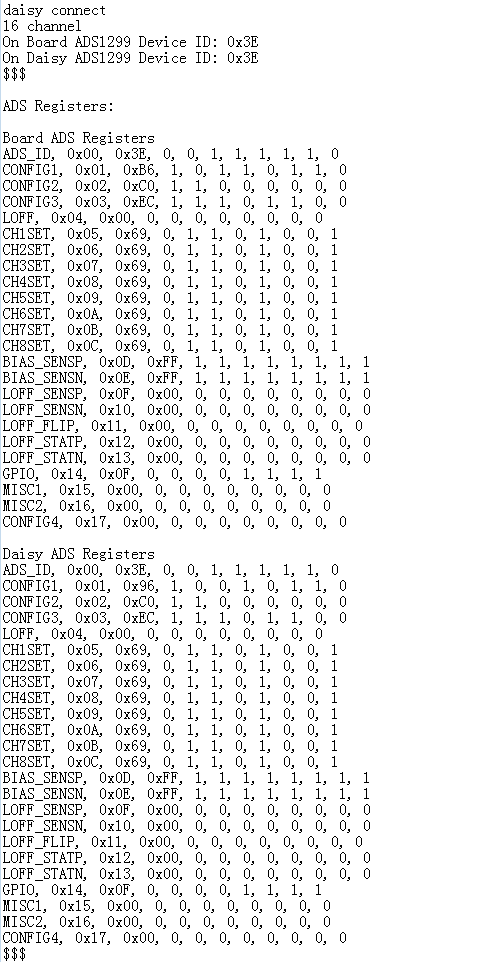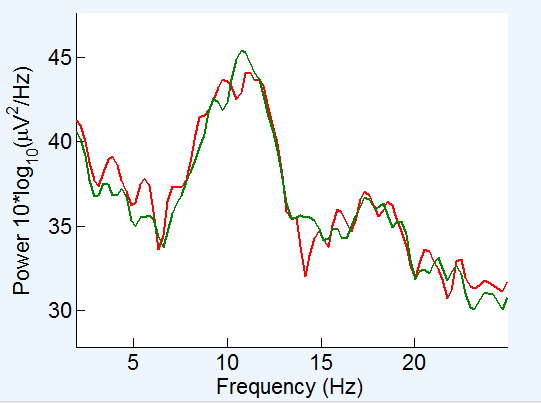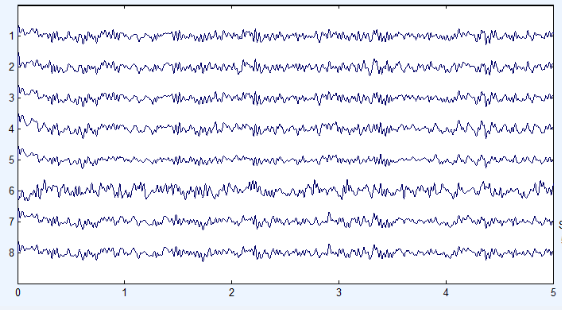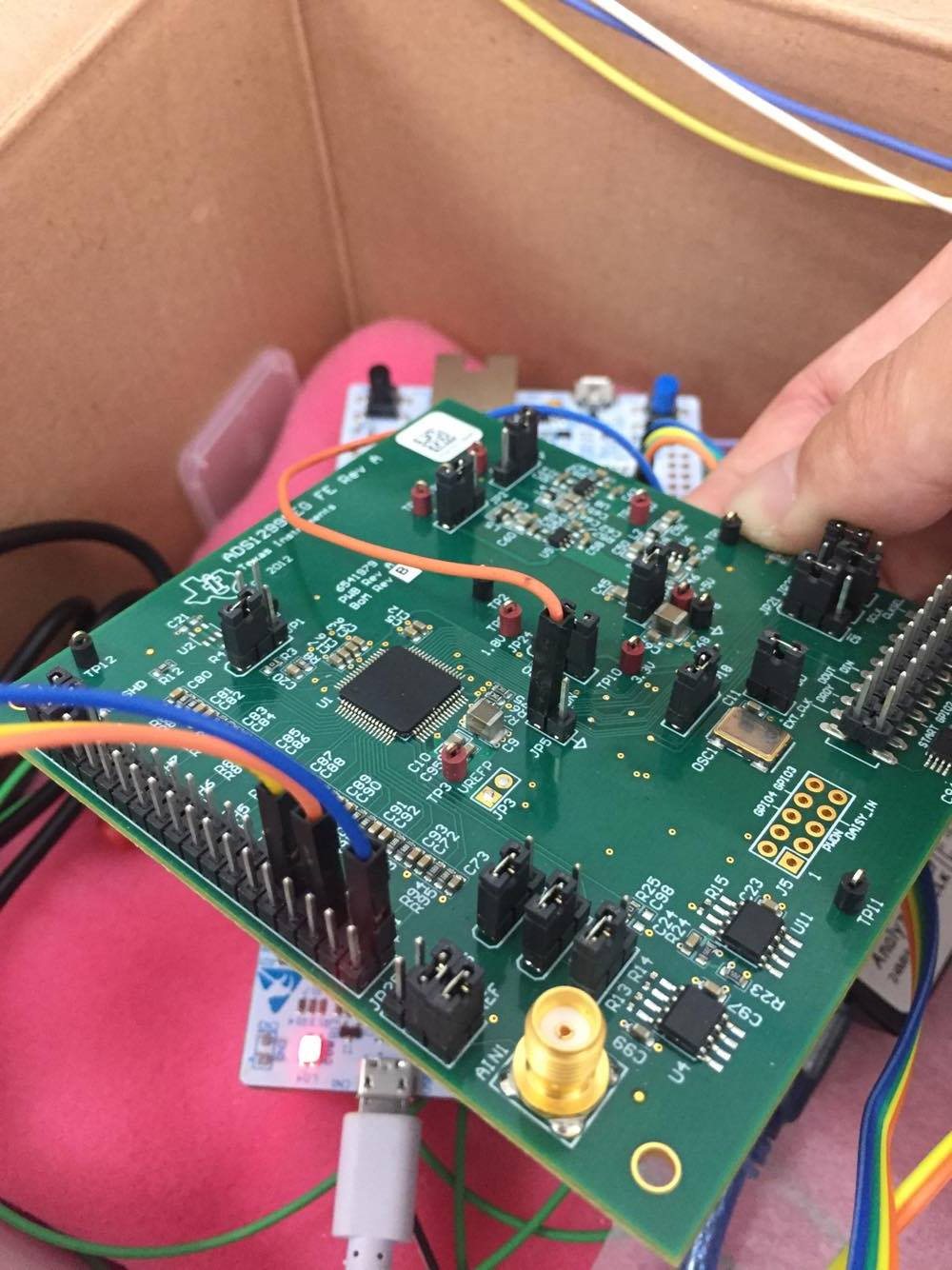Hi,all
I want to use ADS1299 for getting EEG signals.
When I initialize the register value of ADS1299, I have several questions.
The value of registers of ADS1299 as follows.
Setting ADS1299 Channel Values
ADS1299 Device ID: 0xFF
ADS Registers:
ID, 0x00, 0xFF, 1, 1, 1, 1, 1, 1, 1, 1
CONFIG1, 0x01, 0xFF, 1, 1, 1, 1, 1, 1, 1, 1
CONFIG2, 0x02, 0xFF, 1, 1, 1, 1, 1, 1, 1, 1
CONFIG3, 0x03, 0xFF, 1, 1, 1, 1, 1, 1, 1, 1
LOFF, 0x04, 0xFF, 1, 1, 1, 1, 1, 1, 1, 1
CH1SET, 0x05, 0xFF, 1, 1, 1, 1, 1, 1, 1, 1
CH2SET, 0x06, 0xFF, 1, 1, 1, 1, 1, 1, 1, 1
CH3SET, 0x07, 0xFF, 1, 1, 1, 1, 1, 1, 1, 1
CH4SET, 0x08, 0xFF, 1, 1, 1, 1, 1, 1, 1, 1
CH5SET, 0x09, 0xFF, 1, 1, 1, 1, 1, 1, 1, 1
CH6SET, 0x0A, 0xFF, 1, 1, 1, 1, 1, 1, 1, 1
CH7SET, 0x0B, 0xFF, 1, 1, 1, 1, 1, 1, 1, 1
CH8SET, 0x0C, 0xFF, 1, 1, 1, 1, 1, 1, 1, 1
BIAS_SENSP, 0x0D, 0xFF, 1, 1, 1, 1, 1, 1, 1, 1
BIAS_SENSN, 0x0E, 0xFF, 1, 1, 1, 1, 1, 1, 1, 1
LOFF_SENSP, 0x0F, 0xFF, 1, 1, 1, 1, 1, 1, 1, 1
LOFF_SENSN, 0x10, 0xFF, 1, 1, 1, 1, 1, 1, 1, 1
LOFF_FLIP, 0x11, 0xFF, 1, 1, 1, 1, 1, 1, 1, 1
LOFF_STATP, 0x12, 0xFF, 1, 1, 1, 1, 1, 1, 1, 1
LOFF_STATN, 0x13, 0xFF, 1, 1, 1, 1, 1, 1, 1, 1
GPIO, 0x14, 0xFF, 1, 1, 1, 1, 1, 1, 1, 1
MISC1, 0x15, 0xFF, 1, 1, 1, 1, 1, 1, 1, 1
MISC2, 0x16, 0xFF, 1, 1, 1, 1, 1, 1, 1, 1
CONFIG4, 0x17, 0xFF, 1, 1, 1, 1, 1, 1, 1, 1
I have measured the voltages on the device.As follows.
|
AVDD |
2.5 |
|
DVDD |
3.3 |
|
AVSS |
-2.5 |
|
VREFP |
-2.5 |
|
VREFN |
-2.5 |
|
VCAP1 |
-1.3 |
|
VCAP2 |
-0.001 |
|
VCAP3 |
4.38 |
|
VCAP4 |
-0.25 |
What is wrong with my register values?
Thanks!


